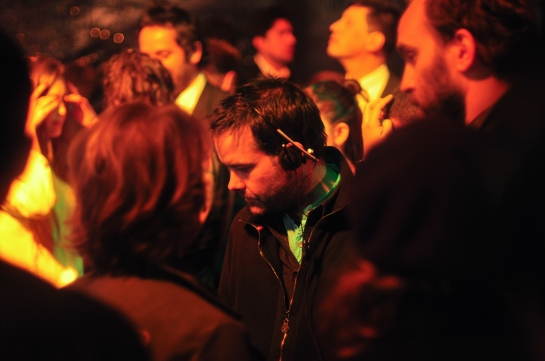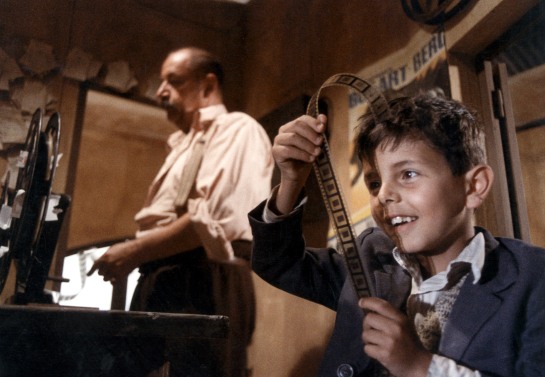This month I wrote my first piece for the Santiago Magazine, Revista Revolver, you can read it on the magazine here: http://www.santiagomagazine.cl/film/00955-gloria-and-getting-gloriously-old-interview-director-sebastian-lelio
I saw Gloria in the Teatro Condell, a former theatre and sometime pornographic cinema in Valparaiso, on the night that director Sebastián Lelio and actor Sergio Hernández came to introduce the film. The location and the atmosphere had turned the event into a spectacle even before the film had started; in garrulous anticipation the crowds had grown to exceed the seats available and hoards of us were crammed into the upper balcony of the theatre to watch from above in conspiratorial excitement.
Lelio describes that night as being, “somehow like a party… I think it was special here because the audience knew that we [Hernández and Lelio] were there. There was this intimate feeling. It’s really moving to learn that people are spontaneously applauding to a screen at the end in many, many cinemas. That breaks my heart, it’s beautiful.”
Premiering at the 63rd Berlinale – Berlin’s International film festival – where Paulina Garcia (Gloria) received the Silver Bear for Best Actress, Gloria certainly has received waves of deserved international attention.
Lelio is glowing with the success of the film when I meet him in Santiago. His return to Chile (he now lives in Berlin) has been filled with opening nights and introductions, roars of applause and celebrations, “Somehow Gloria is like a first film, it’s a turning point for me. It’s the first film that I have made that is going to be shown around the world: in 46 countries. I’m beginning to write in English and I’m opening up new territories in every sense of the term: expressive and physical.”
Gloria is slow, and beautiful and glorious: filled with moments of brilliant humour which make the whole audience erupt into laughter all at once. The film tells the story of a 58-year old woman trying to find her life again in old age. She spends her time worrying for her children, hassled by her neighbours and going out alone at night looking for a man to dance with.
In the Teatro Condell the overwhelming impression is that in spite of the audience’s age, everyone feels an individual connection with Paulina Garcia’s character, whether this is an identification with the simple desire to live life in the fullest sense, or the recognition of a reflection of someone we know; this seems to be Gloria’s power.
Lelio recognises that “this is one of the things which creates an emotional connection, that there is this vital thing in the film that you can relate to.” He goes on to suggest that, “maybe all of the noise that the film has produced is because it’s about an issue which was somehow forgotten. The archetype of the mother was abandoned, not only by films, but it also seems like society doesn’t want to see what women of that age are doing. People want to imagine that these women are in a still place, almost as if they are dead. But this film shows that they are super-alive, that they still want to live.”
Although Gloria has this unique universal power, Lelio also describes it as being a “typically Chilean film” and admits that he believes “that in order to be universal you have to be radically local.” When I try to identify Gloria’s Chilean essence I can’t help recalling that the loudest laughs in the theatre came in response to Gloria’s growing marijuana habit, but Lelio’s explanation is more innocent, “Gloria is a typical character from here. But more than that: the way in which the characters speak and the way in which they behave, the humour in the film; all of that expresses the way we are in Chile and the way our heads work.”
Although he has moved to Berlin, where “everything is possible” in a city which he describes as “super electric; electric and electronic”, Lelio will continue to return to Chile and make films here. “To be making films right now in Chile is really a privilege for me. There are so many good films, some of them are more underground, and some of them are more famous but I feel like there is a dialogue between them all and when this happens it is really beautiful.”
Chile is also present in the luxury of the film’s panoramas and its landscapes. Although the film is set in Santiago, Gloria and Rodolfo also make a trip to Viña del Mar, where Lelio grew up, “I have always wanted to film Viña. I think it’s beautiful to film. The architecture makes it seem like a city that somehow stood still in the 60s: once it was super-elegant and now it is a little bit shabbier.” From the hotel where Gloria and Rodolfo stay the camera takes in a luxurious stretch of the Valparaíso coastline, including the surreal dunes of Con Con.
Lelio describes the variety of locations as an attempt to make everything “super-flamboyant”: “in this case we made a conscious effort to make the film look bigger; so there is a spectacularity about seeing all those places and varieties of locations and characters and extras and dances and weddings and birthdays.”
For its flamboyance Gloria is totally the opposite of Lelio’s previous feature, El Año del Tigre, filmed in the newly made ruins after the earthquake of 2010. But Lelio is essentially a story-teller, following with a passion any new thread that inspires, his stories are his trademark: “It’s like an addiction, because I really feel happy when I have an idea that I know will be realised. I guess this is one of the things that makes me most happy in life. And I just decided a few days ago, what to do next. Now I feel more connected.”











